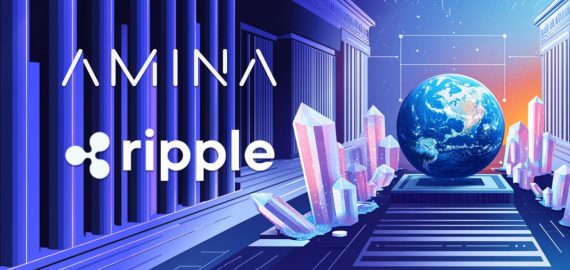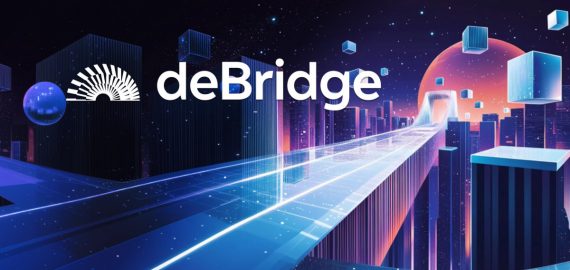GamerHash’s Journey: Leveraging AI to Build the Next-Gen Web3 Ecosystem


In Brief
GamerHash, a platform that initially used GPUs for cryptocurrency mining, has now shifted its mission to leverage AI, positioning itself as a key player in the Web3 ecosystem.

In this interview with Artur Pszczółkowski, Vice President of GamerHash AI, we dive into the transformative journey of GamerHash—a platform that started seven years ago to harness the unused computing power of gamers’ GPUs for cryptocurrency mining. Now, amidst a shifting technological landscape, GamerHash has pivoted to leverage AI, redefining its mission and positioning itself as a key player in the Web3 ecosystem. Artur shares insights on this strategic shift, the evolving role of GPUs, and the future of AI in Web3.
Can you start by giving us an overview of what GamerHash is and how it works?
GamerHash is a platform that was set up seven years ago. To date, we have almost 800,000 gamers who have joined us. The original aim was to provide an incentive to gamers for their GPUs. The best way to do this was by gathering the GPU power of the gamers and then mining crypto. This way, we were easily able to use GPUs for a purpose that brought something in return.
The way it worked was that gamers would connect to us, and they would mine one cryptocurrency on the GPU and another on the CPU. It was constantly changing based on a number of factors that we were working with in real time. In the end, the gamer wasn’t required to know anything about crypto – it was really plug-and-play.
Right now, we’re very happy to be in South Korea for the KBW because our token has been on the market for more than four years, and our primary exchange is Bithumb Korea. About 80% of our volume comes from South Korea, so we’re super happy to meet our community here, our partners, marketing agencies, influencers, etc. For us, it’s the place to be moving forward.
It wasn’t always about AI. How did you drive the change from mining?
The story is really interesting. A year ago, we saw that mining was going in the wrong direction. When the Ethereum merge happened, the whole market was expecting that all the miners would move to other proof-of-work protocols, but what happened was that these devices were switched off. Suddenly, mining, in general, became very inefficient.
We were in a situation where most of our gamers were coming from Europe and the US, where electricity costs also rose due to the war in Ukraine. It was hard to promote our product because we knew it wasn’t beneficial. So we were looking around for the next big thing to go after with the network of gamers we had, and that was AI.
We really switched within three weeks. We pivoted the whole company, starting from websites, communication, the way we were working, the incentive system – everything changed. It became another success in our case because, in January, our token rose several times when the whole market was down. So we consider it a good decision.
Two years ago, people didn’t know much about AI, and now it’s one of the hottest narratives in crypto. How did we get to this point?
Two years ago, when ChatGPT from OpenAI was starting, we didn’t even know what would happen. Most people were focusing on the concept of people losing jobs and artificial intelligence taking over most of the things we do. Right now, we know that didn’t happen. We see that, in most cases, it’s helping us to work and not taking work from us.
AI was the first technology to get a billion users so fast. For us, it was the “aha” moment because we saw that AI requires a huge amount of GPU power. What’s different from mining is that with mining, everybody was saying it’s not ecological. The Bitcoin protocol itself uses more electricity than Argentina, which is true. The whole narrative coming from banks is really against proof-of-work protocols.
What we see in AI is that it requires much more power, and nobody cares because we see that there’s a greater cause of AI. We’re here to find an efficient way of working, and maybe in the end, it will help with ecology. Suddenly, we’re not considered as a project which is not ecological.
For us, it was a great moment. We see that our network of gamers the retail-level GPUs that we had, is now in high demand. The market was waiting for that. We pivoted pretty fast when we saw that our GPU power was required within the AI sector in Web3. That was the moment when the DePIN label was coming. DePIN stands for Decentralized Hardware Infrastructure serving AI, and we were in this very lucky situation because we were decentralized and we had the networks and the hardware.
Right now, there’s a huge fight happening at the top level of DePINs over who will have enough GPU to train the models. We’re not going this way because we don’t have the top-level GPUs, but there’s much more space for us.
How do you see AI in Web3? Do you think it’s a good match for technology?
The situation we’re in right now is that the whole world is in a constant lack of GPU. Whatever NVIDIA is producing, either Tencent from China or Meta/Facebook are buying. We live in a world where there’s no GPU available, and on the other side, everybody is talking about AI being the next big thing. Each corporation, CEO, and board needs to prove that they’re doing something in this area.
The problem that’s popping up is that all these companies that would like to do something with AI can’t do it because there’s no GPU. IT teams are trying to see what’s available in the cloud, but if you look at Google Cloud or Amazon, there’s no GPU – everything is taken.
So we’re in a situation where if you have a medium, small, or big company and you’d like to do something with AI, like training your own LLM model that would help you in work, you wouldn’t be able to.
Can you tell me a bit more about inference and what it is?
So, there’s a big fight happening among the main DePIN projects. All of these big players have top GPUs from data centers, so they’re really fighting for the market of training LLM models. If you have a small or medium company and you’d like to train a model, you need to have a lot of data and a lot of GPU power, and it takes about two weeks, plus or minus. For training, you need to have the best GPUs available on the market; otherwise, it’s just a waste of time.
With our retail-level GPUs, we can’t even get into this market, and actually, we don’t want to. There’s a second thing popping up in the market that wasn’t there a year ago, and this is called inference. The best way to imagine what it is is that training a model, which requires lots of GPU, is the creation of the model based on the given data set. Then, inference is pretty much the hosting of a model.
With retail-level GPUs, we can easily make inferences. So, while at the top of the market, the fight is going on for training. We’re just waiting to see who will be there at the end. When the models are trained, we’re happy to host them. We can easily use sharding to put these models on our gamers’ decentralized network. It seems that inference might be one of the hottest narratives in the second half of this year.
What kind of projects or actors do you think will build the future of the AI Web3 ecosystem?
Within AI in Web3, we have different types of projects. Moving from the bottom, we have the protocols or blockchains which are either capable of or specifically designed to serve AI requirements. I’m not just thinking about GPU or providing GPU, but in general hosting, assistance, etc. There are a number of elements that the AI blockchain will handle.
Then we have two parts of the GPU market: supply and demand. We, as GamerHash, are on the supply side. We have graphic cards from gamers, and we manage the community of our gamers. We have more and more GPUs, but we’re not going to each single client saying, “Hey, you can host your LLM model on our network.” We don’t have the capacity for that; it’s not our core competence.
But there are projects on the demand side, and these are pretty much marketplaces of AI. If your company was willing to provide an LLM model, you’d probably go to one of these marketplaces. We can easily call out Golem, Akash, IONet, and Aethir as examples. These guys have salesforces, and they’re looking on the market for projects that would like to use GPUs.
From our side, it’s important that we’re connecting to these marketplaces, and they’re focusing on the demand side. We’re providing the supply. So altogether, there’s supply, there’s demand, and there are protocols. Everything else is either small or in a niche. I’m not saying that something is not important, but it’s not a major sub-sector. There are a few smaller projects that are doing very interesting things within AI, but for the purpose of this question, it would be too much to go into detail.
Can you explain how gamers are sharing their GPUs on your platform and how it works?
Our focus, which comes from seven years back, is really on making everything super easy. Everything has to be plug and play. The way our platform works is that gamers switch it on in the background. There’s no situation where it causes any issues with the computer or with playing games. Our focus is really on making everything super, super easy.
It’s the same case with AI. When you’re installing our AI app, it’s working in the background when there’s work for which somebody would like to pay you with your GPU. When this is done, you’re receiving an incentive. It’s just as simple as that – it’s just working in the background, pretty much like a screensaver, you could say.
All you need to do is go to the gamerhash.com website, download the app, make a very short benchmark, and it will start to work. This is how we got almost 1 million gamers because it was super easy to start with.
Disclaimer
In line with the Trust Project guidelines, please note that the information provided on this page is not intended to be and should not be interpreted as legal, tax, investment, financial, or any other form of advice. It is important to only invest what you can afford to lose and to seek independent financial advice if you have any doubts. For further information, we suggest referring to the terms and conditions as well as the help and support pages provided by the issuer or advertiser. MetaversePost is committed to accurate, unbiased reporting, but market conditions are subject to change without notice.
About The Author
Victoria is a writer on a variety of technology topics including Web3.0, AI and cryptocurrencies. Her extensive experience allows her to write insightful articles for the wider audience.
More articles

Victoria is a writer on a variety of technology topics including Web3.0, AI and cryptocurrencies. Her extensive experience allows her to write insightful articles for the wider audience.

















































